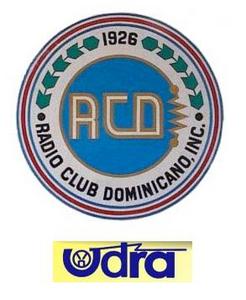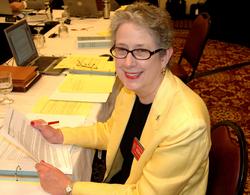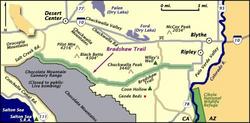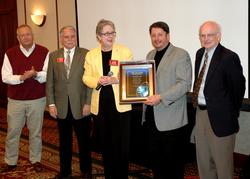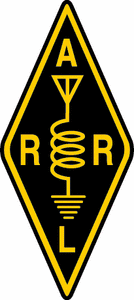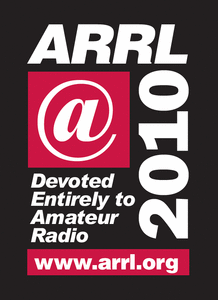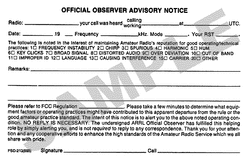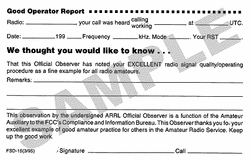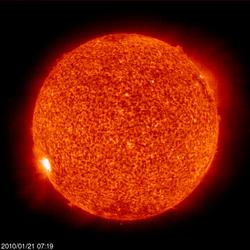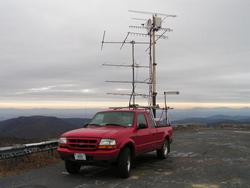 January 21, 2010 John E. Ross, KD8IDJ, Editor
| ||||||||||||||
+ Available on ARRL Audio News + Haiti Earthquake: Dominican Hams Attempt to Install Repeaters in Haiti
Members of the Radio Club Dominicano (RCD) -- the Dominican Republic's IARU Member-Society -- and Union Dominicana de Radio Aficionados (UDRA) arrived in Haiti late last week to install an emergency radio communications station and a mobile station. Shortly after they arrived, the hams returned to the Dominican Republic for safety reasons. "Within a few hours though, reports via the RCD Facebook page reported that the HI8RCD team of eight amateurs was back in the [Dominican Republic] border town of Jimani," said IARU Region 1 Emergency Communications Coordinator Greg Mossop, G0DUB. "Their convoy, which included other non related Dominicans, was assaulted. The radio amateurs are uninjured, but they decided to leave the capital for safety [reasons] and return to the border unescorted. They report the situation as 'extremely unsafe.'" The team was able to install two VHF repeaters: one in the Dominican Republic border town of Jumaní and another Port-au-Prince. Mossop said that these repeaters have been used by the Red Cross and Civil Defense since, until quite recently, there has been no other way to communicate. The station at the embassy in Haiti could not be activated. "The HI8RCD team of amateurs is still in Jumaní, where many wounded are arriving," said IARU Region 2 Secretary Ramón Santoyo, XE1KK. "They are helping Haitians to contact their relatives and friends outside of Haiti, but they can't help the world to find specific individuals in Haiti. They are receiving many e-mails with such requests, but security and road conditions make impossible to look for specific individuals in Haiti at the present." Read more here. + ARRL Leadership: Board Ramps Up Focus on EmComm Issues, Looks to League's Centennial
The ARRL Board of Directors held its 2010 Annual Meeting on January 15-16 in Windsor, Connecticut, under the chairmanship of President Joel Harrison, W5ZN, to consider and act on a number of recommendations from committees, as well as motions by Directors. With the election of ARRL First Vice President Kay Craigie, N3KN, as the League's 15th President, the 2010 Annual Meeting of the ARRL Board of Directors was off to a fast-paced start. Craigie, who ran unopposed, takes over the top leadership position from Harrison, who in October announced that he would not be seeking re-election. Craigie officially took office as President at the adjournment of the Annual Meeting. Read more here. + Public Service: Ham Helps Out in Riverside County Desert Rescue
On the afternoon of Saturday, January 16, Christopher Walsh, KJ6BBS, of Irvine, California, was listening to radio traffic on 446.760 MHz, a channel used by the Los Angeles area-based Pocket Auto-Patch Association (PAPA) system -- an Amateur Radio network of 22 interlinked analog and digital D-STAR repeaters that provides extensive coverage of the Southern California region and beyond -- when he heard an emergency radio call break from Jose Hernandez, KI6PCK, of Thousand Oaks, California, reporting an injured male who had broken some ribs from an ATV-type accident. Read more here. ARRL Recognizes: Board Recognizes Outgoing ARRL President Joel Harrison, W5ZN
After more than 27 years of elected volunteer service to the ARRL, outgoing ARRL President Joel Harrison, W5ZN, has retired. In recognition of his dedication to the League over nearly three decades, the ARRL Board of Directors bestowed their thanks in the form of an engraved plaque. Presented by incoming President Kay Craigie, N3KN, on behalf of the Board, the plaque recounts Harrison's elected service to the ARRL: Arkansas Section Manager, 1983-1988; Delta Division Director, 1988-1996; Vice President, 1996-2000; First Vice President, 2000-2006, and President, 2006-2010. + ARRL Recognizes: ARRL Board Bestows Awards at 2010 Annual Meeting
The ARRL Board of Directors had the pleasure and distinction of bestowing two annual awards at its 2010 Annual Meeting -- the inaugural George Hart Distinguished Service Award and the Bill Leonard, W2SKE, Professional Media Award. The Hart Award -- established by the Board at its 2009 Second Meeting -- is named in honor of George Hart, W1NJM, who served as Communications Manager at ARRL Headquarters and was the chief developer of the National Traffic System (NTS). The award is conferred upon an ARRL member whose service to the League's Field Organization is of the most exemplary nature. Selection criteria include the nominee's operating record with the National Traffic System, participation within the Amateur Radio Emergency Service® (ARES®), or station appointments and/or leadership positions held within the ARRL Field Organization. The Bill Leonard, W2SKE, Professional Media Award is a national level award given each year to honor three professional journalists whose outstanding coverage in audio, video and print formats best reflect the enjoyment, importance and public service value of the Amateur Radio Service. Read more here. + New ARRL Web Site Coming Soon!
It's almost here! After more than two years of planning, designing and writing, we are eagerly awaiting the launch of the new ARRL Web site. We've been able to make the online experience easier for our members -- from the online store, to registering for a class, to finding a club -- plus we've created a new, enhanced member profile with many more options available. We've made improvements with you in mind, making sure that our members will have the easiest, most enjoyable online experience possible. The new Web site will be available the first week of February. + Now You Know!: The ARRL Amateur Auxiliary By ARRL News Editor S. Khrystyne Keane, K1SFA The Amateur Auxiliary is composed of approximately 700 ARRL volunteer-appointees known as Official Observers (OO). Located across the country, they monitor the bands and notify amateurs of technical and operating discrepancies as a service to their fellow hams. Time and again, the FCC has indicated the responsibility to keep our operating standards and spectrum in shape rests with the Amateur Service. The Amateur Auxiliary program and its OOs are the League's answer to this challenge.
The OO Program has four main objectives: to foster a wider knowledge of and better compliance with the FCC rules; to extend the concepts of self-regulation and self-administration in the Amateur Service; to enhance the opportunity for individual amateurs to contribute to the public welfare, and to enable the FCC's Enforcement Bureau to efficiently and effectively utilize its limited manpower and resources. The role of the Amateur Auxiliary is to provide an unbiased forum for technical and operational advice and other assistance to amateurs who are receptive. The task is not to find fault or lay blame. It is to identify cause and effect, many of which are not based upon technical, but behavioral or social issues, as well as to find ways to achieve solutions to promote good amateur operating and engineering practice on our bands. Even though you might consider yourself a good operator (and don't we all consider ourselves to be good operators?), you might receive an OO Notice. If you do get one, don't worry! The OO post card is simply a friendly note to alert you to possible equipment factors or operating practices that might have contributed to an apparent departure from a rule or the good amateur practice standard. Remember, OOs are friendly helper-advisors; their mission is to assist those who are receptive to being assisted. You do not need to reply to the notice, but you may want to take a few minutes to determine what caused the apparent problem and then take steps to fix it. Your corrective actions might even head off an FCC "pink slip" down the road (which, by the way, are not pink!). Keep in mind that OOs are advised to avoid hair-splitting and to deal only with black-and-white rule discrepancies only. For example, an OO should not send a notice to someone who forgot to identify his station for 10 minutes and 8 seconds! If you feel that the OO sent you a notice that violates the principles of the program, send a copy to your Section Manager or to Headquarters for evaluation and possible action -- quality control is critically important in a program as sensitive as this one.
To emphasize the positive nature of the Amateur Auxiliary Program, OOs will also send out "Good Operator Reports" to those operators whose radio signals and/or operating practices are consistent with the highest standards and are a model for others to follow. Every amateur should strive to pattern their operating and signals after your example. Prospective OOs must pass a comprehensive examination based on a set of study materials before they can be certified as members of the Amateur Auxiliary; they must also be an ARRL member and be licensed for at least four years. If you are interested in becoming an OO, contact your Section Manager. Now you now! Solar Update
Tad "Whose dwelling is the light of setting Suns" Cook, K7RA, reports: We saw just one day with a blank Sun this week -- Tuesday, January 19 -- when sunspot group 1040 moved over its western limb. New sunspot 1041, which is really old sunspot group1039, emerged from the east, bursting with solar flares (five so far) and as a result, both the planetary and high latitude K index jumped to 5 at 1800 UTC on January 20. The M-class solar flare on Wednesday caused an SID, or Sudden Ionospheric Disturbance, and Friday's bulletin will talk about a Stanford University project encouraging homebrew SID detectors for ham station and classroom, allowing you to detect these events when they happen -- no more guessing as to why your receiver suddenly seems dead. Look for more information in the Solar Update, available on the ARRL Web site on Friday, January 22. For more information concerning radio propagation, visit the ARRL Technical Information Service Propagation page. This week's "Tad Cookism" brought to you by William Wordsworth's Lines Written a Few Miles Above Tintern Abbey. + ARRL Publications: The 2009 ARRL Periodicals on CD-ROM Now Shipping
The 2009 ARRL Periodicals on CD-ROM is now available and includes the complete 2009 fully searchable collection of three ARRL journals -- QST, QEX, and the National Contest Journal (NCJ). In addition, the CD-ROM includes source code for software projects and PC board patterns, Section News, as well as the ever-popular Contest Soapbox and Contest Results. Search the full text of every article by entering titles, call signs or names. See every word, photo -- most in color -- drawing and table in technical and general-interest features, columns and product reviews, plus all advertisements. Print what you see, or copy it into other applications. System requirements: Microsoft Windows and Macintosh systems, using the industry standard Adobe Acrobat Reader software. CD-ROMs for other years are also available. This Week on the Radio
This week, be sure to check out the ARRL January VHF Sweepstakes on January 23-25. On January 22, there is a running of the NCCC Sprint. Look for the YL-ISSB QSO Party (SSB), the MIE 33 Contest and the BARTG RTTY Sprint on January 23-24. The SKCC Sprint is January 27. Next week, there is another running of the NCCC Sprint on January 29. The CQ 160 Meter Contest (CW) is January 29-31. The REF Contest (CW), the UBA DX Contest (SSB) and the SPAR Winter Field Day are January 30-31. The Classic Exchange (CW) is January 31-February 1. All dates, unless otherwise stated, are UTC. See the ARRL Contest Branch page, the ARRL Contest Update and the WA7BNM Contest Calendar for more info. Looking for a Special Event station? Be sure to check out the ARRL Special Event Station Web page. + Silent Key: CQ Magazine Columnist Dave Ingram, K4TWJ (SK)
Dave Ingram, K4TWJ, who penned the "World of Ideas" and "How It Works" columns in CQ Magazine, passed away Wednesday, January 20, from complications due to a heart attack late last year. He was 67. A writer and columnist at CQ since 1981, Ingram -- an ARRL member -- began his career at the magazine writing the amateur television "World of Video" column that later morphed into the "World of Ideas," covering code keys, stealth antennas, building "new vintage" tube gear, mobiling and more. Ingram also served as CQ's QRP Editor. "His enthusiasm for whatever caught his interest was contagious and spread widely through his informal, yet educational writing style," recalled CQ Managing Editor Rich Moseson, W2VU. Ingram also wrote for RadCom -- the Radio Society of Great Britain's member journal -- and other international ham magazines. Funeral arrangements are pending. -- Information provided by CQ Magazine ARRL Continuing Education Course Registration
Registration remains open through Sunday, January 24, 2010, for these online course sessions beginning on Friday, February 10, 2010: Amateur Radio Emergency Communications Level 1; Antenna Modeling; Radio Frequency Interference; Antenna Design and Construction; Ham Radio (Technician) License Course; Propagation; Analog Electronics, and Digital Electronics. To learn more, visit the CEP Course Listing page or contact the Continuing Education Program Coordinator. | ||||||||||||||
